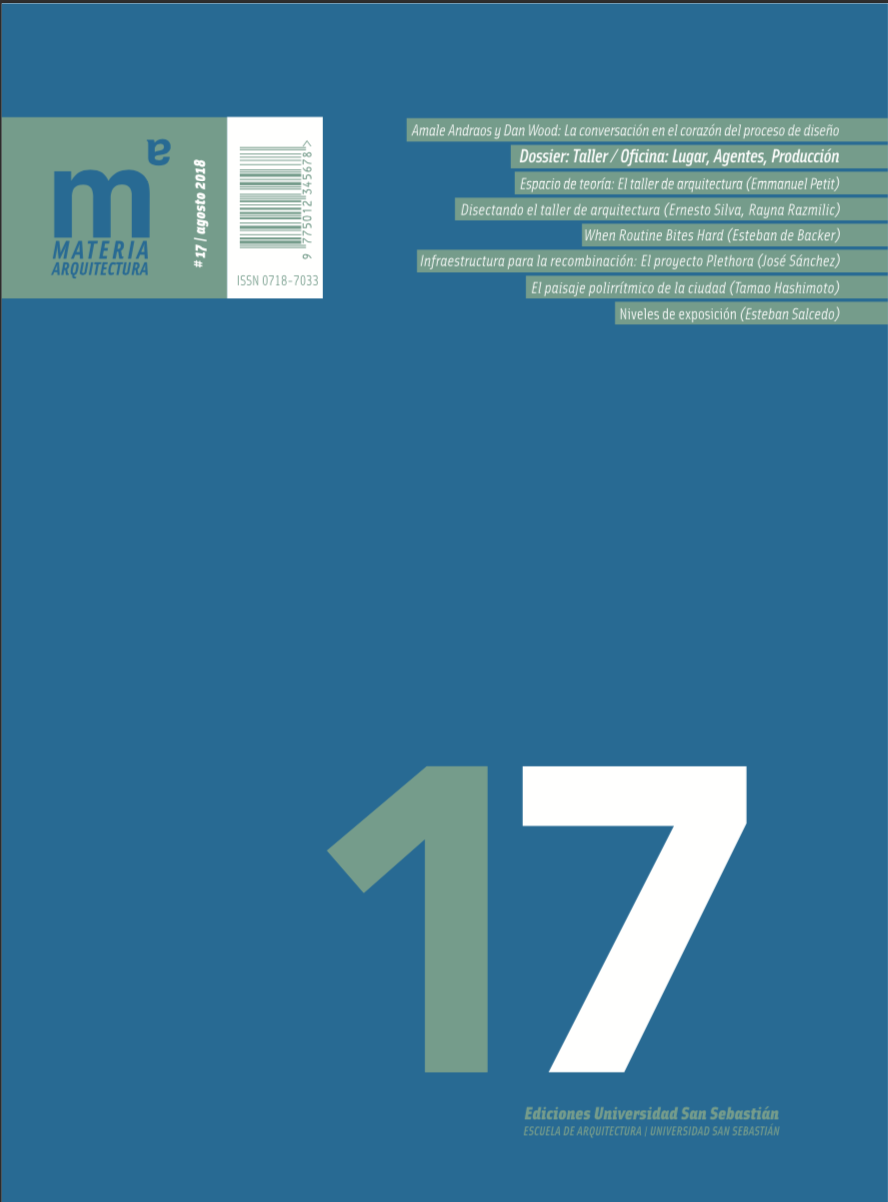Infrastructure for recombination: The work and ethos of Plethora Project
Article Sidebar
Keywords:
Main Article Content
Abstract
This paper presents a critique to the traditional business model followed by many architecture studios who utilize the ‘architectural competition’ as a format for developing new ideas and innovation. The abundant competition calls, implying free labour, that architectural competitions facilitate has become a mechanism to coerce architectural innovation towards the benefit of a ruling elite. The Plethora Project studio has attempted since 2011 to hybridize the practice of architecture with forms of entertainment in order
to allow cultural engagement and ultimately communicate the challenges that architecture faces not only from a perspective of technological progress but from one of social progress as well. To do so, the medium of video games has been selected to communicate complex systems of interdependence, inviting a new audience of non- architects to participate in the construction of knowledge and discourse by understanding complex webs of interdependence that link material resources, knowledge, labour and
access. The studio sits at the intersection
between an architectural firm and a gaming studio with social interest. This implies the necessity for innovation in economic strategies that enable the autonomy of ideas and the development of non-conventional projects.
Article Details
Materia Arquitectura provides immediate and free access to all the content of this online edition, published simultaneously with the print edition.
Materia Arquitectura does not charge authors for any concept.
All contents of this electronic edition are distributed under the Creative Commons license of "Attribución-shareAlike 4.0 Internacional" (CC-BY-SA).
The rights of the published texts and images belong to their authors, who grant Materia Arquitectura the license for their use. The management of the permits and the authorization of the publication of the images (or of any material) that contains copyright and its consequent rights of reproduction in this publication is the sole responsibility of the authors of the articles.
As long as they mention their origin, the authors are free to distribute their articles by other means. Any total or partial reproduction of the material must mention its origin.
Downloads
References
BOGOST, I. (2006). Unit Operations: An Approach to Videogame Criticism. Cambridge, MA: MIT.
BRAYER, M.-A., & MIGAYROU, F. (2013). Naturalizing Architecture: Archilab 2013. Orleans, France: Editions HYX.
COOPER, S., TREUILLE, A., BARBERO, J., LEAVER-FAY, A., TUITE, K., KHATIB, F., ... POPOVIC, Z. (2010). The Challenge of Designing Scientific Discovery Games. In Proceedings of the Fifth International Conference on the Foundations of Digital Games (pp. 40–47). ACM.
GERSHENFELD, N. A., & WARD, J. D. (2016). US9506485B2. United States. Retrieved from https://patents.google.com/ patent/US9506485B2/en
LICKLIDER, J. C. R. (1960). Man-Computer Symbiosis. IRE Transactions on Human Factors in Electronics, HFE-1(1), 4–11. Doi: 10.1109/THFE2.1960.4503259
MAAS, W., GRAAFLAND, A., BATSTRA, B., VAN BILSEN, A., & PINILLA, C. (Eds.). (2007). Spacefighter: The Evolutionary City (Game:). Barcelona, Spain: Actar.
SÁNCHEZ, J., & ANDRASEK, A. (2017). BLOOM. In F. Gramazio, M. Kohler, & S. Langenberg (Eds.), Fabricate 2014 (pp. 98–103). London, England: UCL Press.
SCHOLZ, T., & SCHNEIDER, N. (2017). Ours to Hack and to Own: The Rise of Platform Cooperativism, a New Vision for the Future of Work and a Fairer Internet. New York, NY: OR Books.
SCHUMACHER, P. (2011). The Autopoiesis of Architecture: A New Framework for Architecture. Chichester, England: Wiley.
SRNICEK, N. (2016). Platform Capitalism. Cambridge, England: Polity Press.
Most read articles by the same author(s)
- José Sánchez, Infraestructura para la recombinación: el trabajo y el ethos del proyecto Plethora , Materia Arquitectura: No. 17 (2018): Materia Arquitectura 17 (Agosto/August 2018)
- Jose Sanchez, Simulation as reenactment, the construction of minga , Materia Arquitectura: No. 28 (2025): Materia Arquitectura 28 (Agosto/August 2025)
